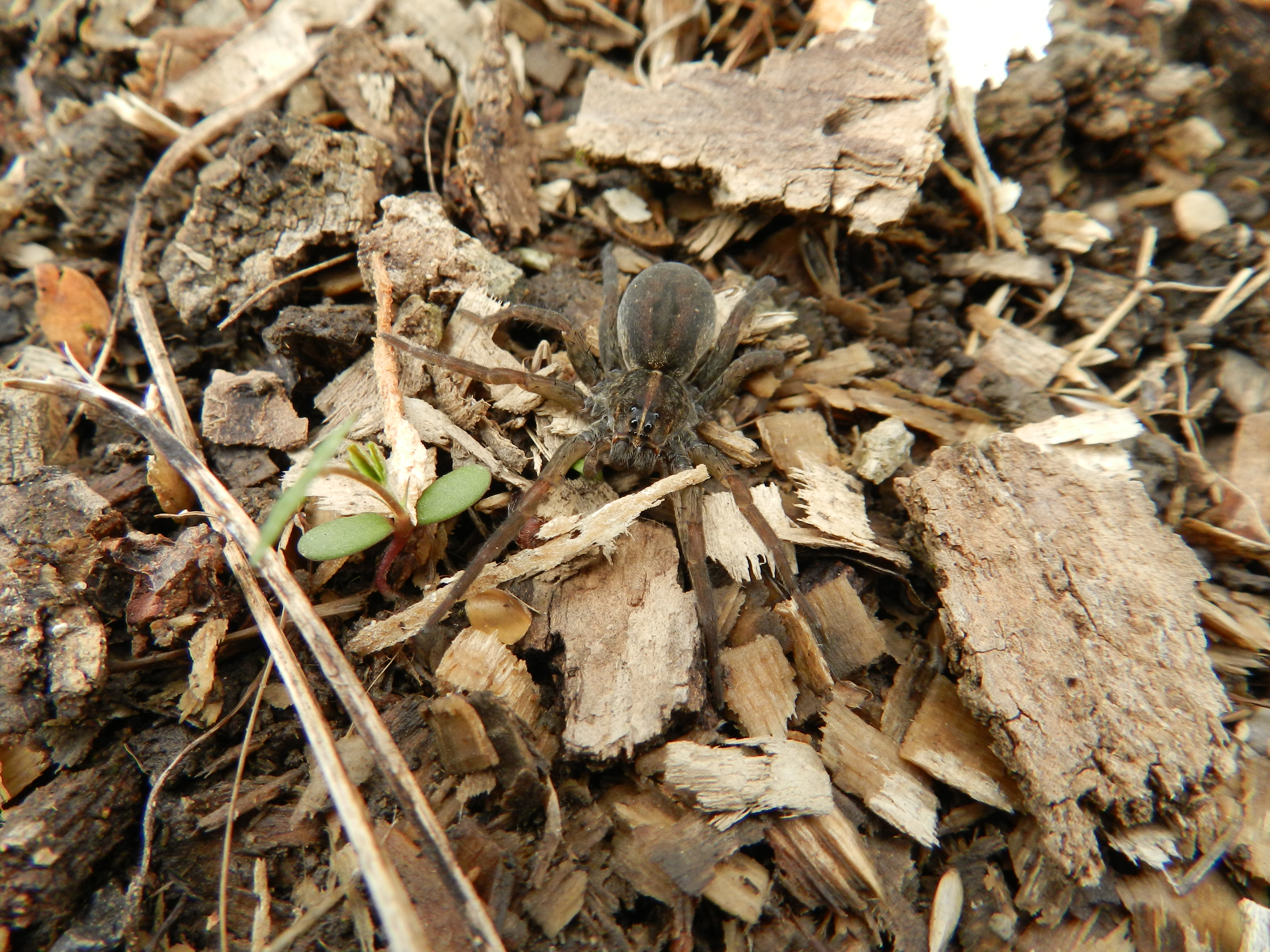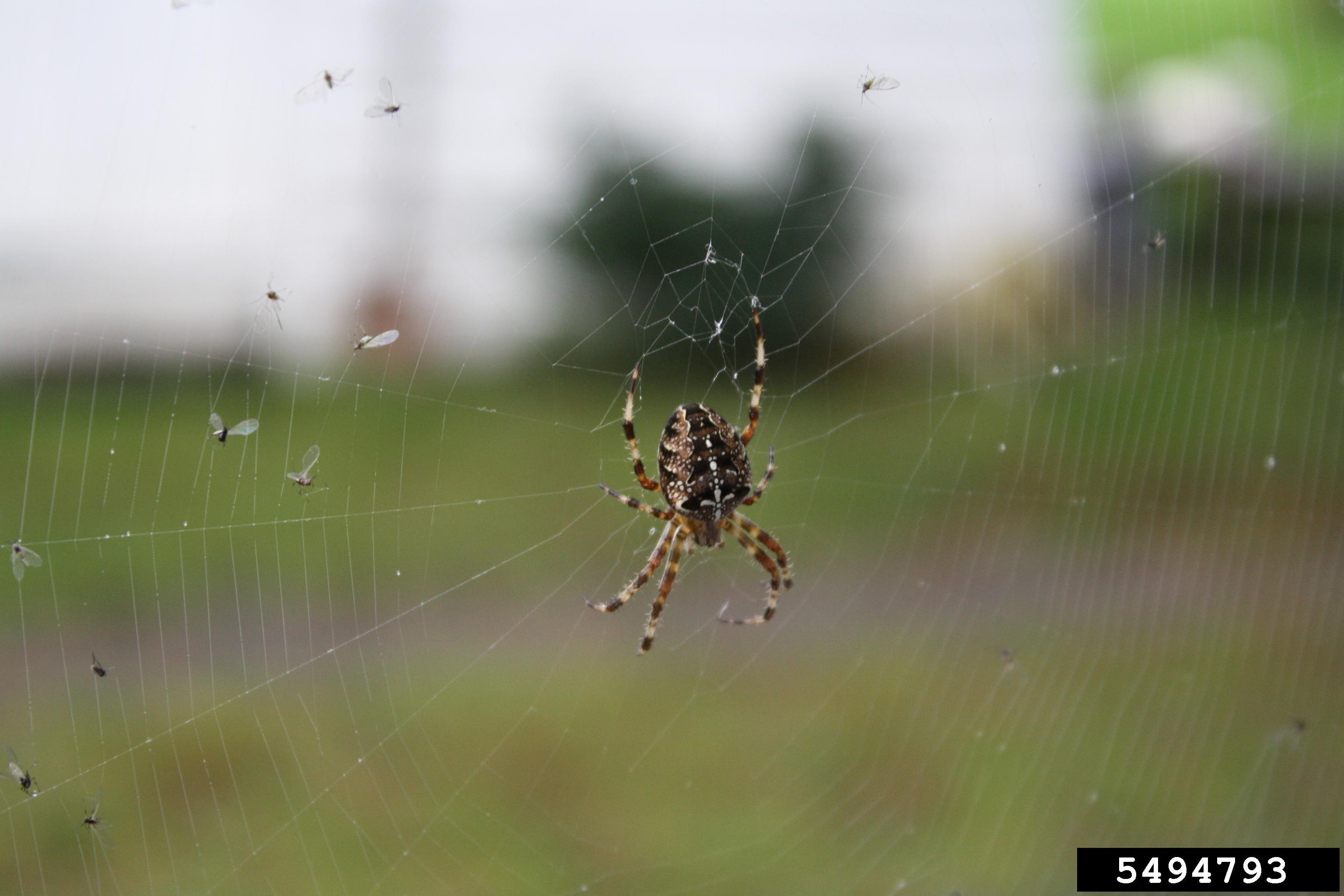Don’t panic over brown recluse spiders in Michigan
There are rare, isolated populations of brown recluse spiders living in Michigan, but the vast majority of Michiganders will never come within a half-mile of a brown recluse spider. See photos of common-look-alikes.

There were two stories of people diagnosed with brown recluse bites in the media this past week, “Muskegon woman hospitalized after brown recluse spider bite” from Detroit Free Press and “Rising temps may mean more brown recluse spiders” from Wood TV. One person was reported to have been bitten up in Leelanau County, the other in Nunica, Michigan, in Ottawa County. Both bites were reported to have occurred outside. The offending spider was not collected and identified in either case. The attending physicians based their diagnosis on the appearance of the bite.
Last year, a woman sent me a spider she captured in the act of biting her. The bite festered and she went to the emergency room at the University of Michigan Hospital in Ann Arbor, Michigan. The attending physician diagnosed the bite as that of a brown recluse spider. The spider the lady sent me was a yellow sac spider, Cheiracanthium spp.and (Miturgidae).
It is very difficult to diagnose the perpetrator of a bite based on the appearance of a bite. I am not saying it’s impossible that both of these people were bitten by a brown recluse spider, but it is very unlikely.
Even though Michigan is not in the accepted native range of the brown recluse, it has been found in 10 Michigan counties. Prior to 2017, it had been found in Genesee, Hillsdale, Lenawee, Ingham and Kent counties. The Kent County find came from a home in Grand Rapids, Michigan, where the residents had just returned from a trip to Missouri, where the spider is common. Recluse spiders are known to hitchhike in boxes, suitcases and articles of commerce.
In the spring of 2017, a brown recluse spider was found in an unheated garage in Genesee County and in a building on the University of Michigan campus in Ann Arbor (see the 2017 Michigan State University Extension article, “Update on brown recluse spiders in Michigan”). The owner of the garage indicated she had not traveled out of Michigan prior to finding the spiders. Large universities like Michigan have large transient populations of students and visitors from all over the country, so it is not too surprising for a recluse or two to show up there.
In the past 14 months, over 700 Michiganders have sent me photographs of spiders thought to be recluse spiders they had encountered in their homes and yards. Some people just sent stories about bites thought to be recluse bites. Some of these stories were profoundly heart-wrenching.
Of these 700 spider photos, only seven turned out to be of brown recluse spiders. Five of these represented new county records for the recluse in Michigan. The new county records were for Livingston, Oakland, Shiawassee and Wayne counties. There have been multiple finds in Genesee, Washtenaw and Lenawee counties.
Here is a map of Michigan showing the counties where the recluse spider has been found. The counties shown in blue are where the brown recluse had been found prior to 2017. Red counties are where it was found in 2017.
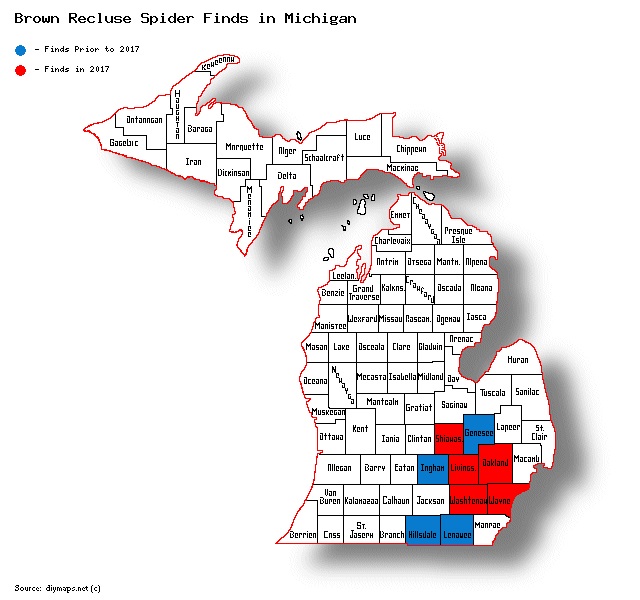
One of these recluse populations, located in a single family residence in Tecumseh, Michigan, in Lenawee County, has been eradicated. This was a true reproducing population of brown recluse spiders consisting of numerous individuals of all life stages including eggs, juveniles and adults. After several attempts using conventional insecticide sprays failed to rid the spiders from their home, the homeowners took out a second mortgage and hired a crew to encase the home in plastic sheeting and pump it full of Vikane gas. They felt they had no other choice to protect their small children.
No one in this family was ever bitten by the spiders over the several years they had shared their home with them. They sent me this photo below of their home while it was prepped for the fumigation.
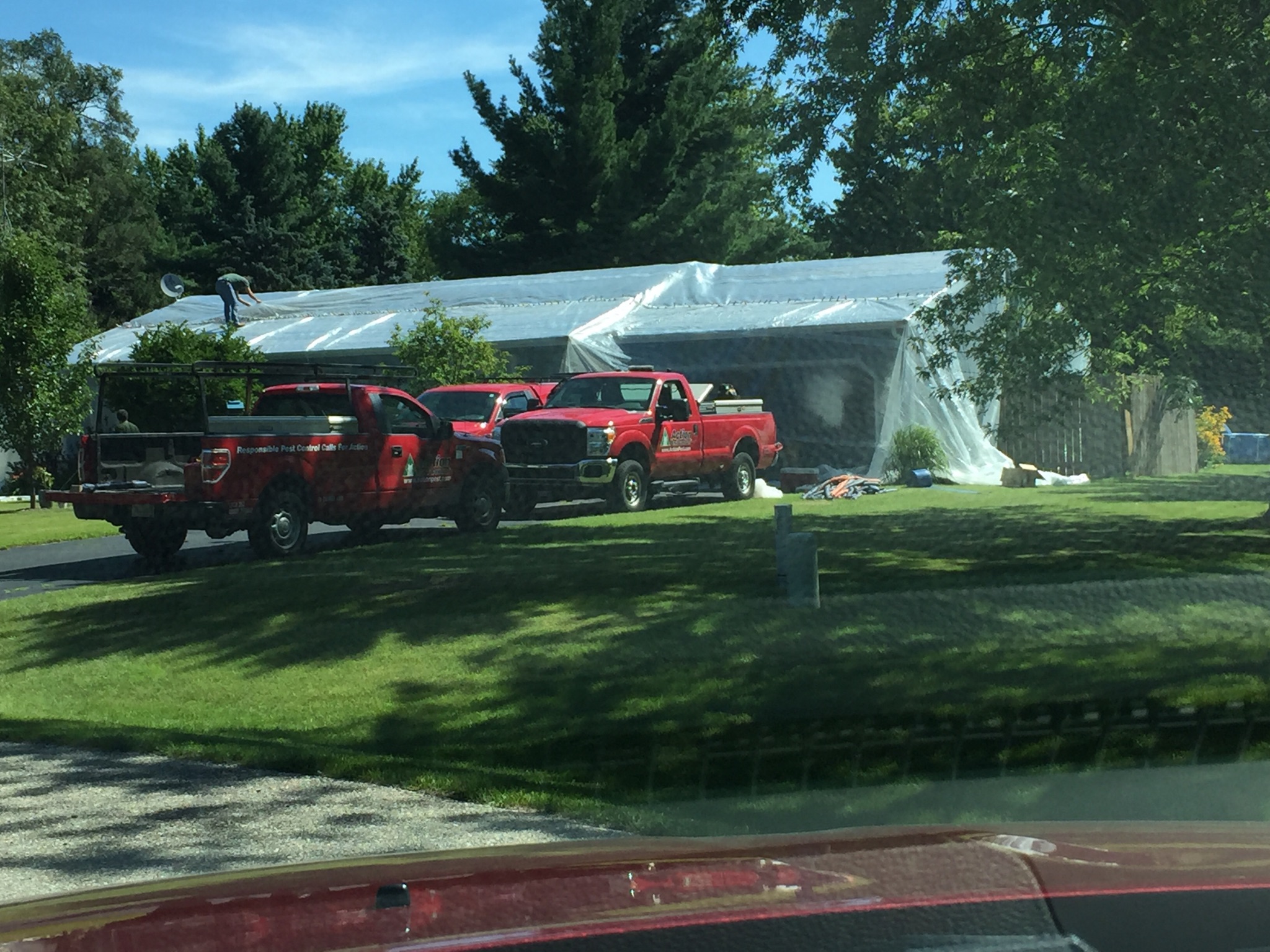
So what does this all mean? It means there are rare, isolated populations of brown recluse spiders living in Michigan. It means that the vast majority of Michiganders will never come within a half-mile of a brown recluse spider. None of the brown recluse spiders that have been found in Michigan walked here from Arkansas or even southern Ohio for that matter; they were brought or carried here in suitcases, boxes or some other cartage.
I think it is too early to suggest they represent the beginning of a great northern migration of the brown recluse. There has been only one report of a recluse spider from Wisconsin and that was in 2016. There have been no reports of recluse spiders marauding through the northern parts of Ohio, Indiana or Illinois, so try to relax and enjoy your summer. Please. If you think you found a recluse, send me the spider or a photo of the spider to bugman@msu.edu. I will either put your mind to ease or ruin your summer.
There are about 37,000 species of spiders worldwide with about 3,800 species in North America. Michigan is home to just 500 or so native species of spiders, only three of these native species (not including the brown recluse) are medically important. These are the northern black widow, yellow sac spider and, to a lesser degree, the northern cobweb spider. Yellow sac spiders are very common in and around homes. All Michigan spiders are predators that use venom to subdue their prey. Most will try to bite if threatened. None will aggressively chase you down the hall to bite you, although some consider the yellow sac spider to be a recreational biter—that is, they will bite you just for the hang of it.
Michigan spiders range in size from under 1/8 inch in the Linyphiidae (sheetweb and dwarf spiders) to almost an inch long in the Lycosidae (wolf spiders). Though tiny, researchers have estimated there are 25 metric million tons of spiders on the earth right now.
Spiders do possess a super power too. The silk spiders spin to build their webs and dangle from your ceiling is one of the strongest materials known. Not all spiders construct webs of silk to capture their prey. Some simply run their prey down and overwhelm it. Others are ambush hunters that lie in wait for their prey to walk by then pounce on it.
More than 90 percent of the spider’s diet is made up of insects and they chow through as much as 800 million tons of prey every year. In doing so, spiders play an essential role in keeping natural ecosystems in balance. However, for many, the very word "spider" conjures terrifying or repulsive images, and I’m now going to share with you some of those images (at the end of this article).
Back to Michigan spiders. The 700 photos or specimens of spiders sent to me last year that were not recluse spiders include most, if not all, of the common spiders found around Michigan homes. The nursery web spider and the dark fishing spiders are most likely to be confused with a brown recluse.
The table below is a list of spiders Michiganders think might be a brown recluse, ordered by rank in terms of the number of photographs sent to me last year. It is not surprising that most of these are nomadic hunting spiders that do not spin webs to capture their prey.
|
Rank |
Common name |
Scientific name |
Family |
|---|---|---|---|
|
1 |
Dark fishing spider |
Dolomedes tenebrosus |
Pisauridae |
|
1 |
Nursery web spider |
Pisaurina mira |
Pisauridae |
|
3 |
Grass spider |
Agelenopsis pennsylvanica |
Agelenidae |
|
4 |
Big ol' wolf spider |
Tigrosa helluo |
Lycosidae |
|
5 |
Running jumping spider |
Philodromusspp. |
Philiodromidae |
|
6 |
Cell spider |
Dysdera crocata |
Dysderidae |
|
7 |
Bold jumper |
Phidippus audax |
Salticidae |
|
8 |
Yellow sac spider |
Cheiracanthiumspp. |
Eutichridae (formerly placed in Miturgidae and before that in Clubionidae) |
|
9 |
Parson spider |
Herpyllus ecclesiasticus |
Gnaphosidae |
|
10 |
Hacklemesh Weaver Spiders |
Callobius spp. and Amaurobius spp. |
Amaurobiidae |
|
10 |
Broad-faced sac spider |
Trachelas tranquillus |
Trachelidae (formerly placed in Clubionidae) |
|
10 |
Crab spiders |
Xysticus spp. (probably) |
Thomisidae |
|
10 |
Cross spider |
Araneus diadematus |
Aranaeidae |
|
10 |
False widow |
Steatoda borealis |
Theridiidae |
|
10 |
Furrow spider |
Lariniodes sp |
Aranaeidae |
|
10 |
Long-bodied cellar spider |
Pholcus phalangiodes |
Pholcidae |
|
10 |
Sac spider, other |
Clubionidae |
|
|
10 |
Tree trunk spider |
probably Platycryptus undatus |
Salticidae |
|
10 |
Triangulate cobweb spider |
Steatoda triangulosa |
Theridiidae |
|
10 |
N/A |
Coras juvenilis |
Agelenidae |
Here are some excellent photos of some of these spiders. For purposes of comparison, here is a nice photo of a brown recluse.
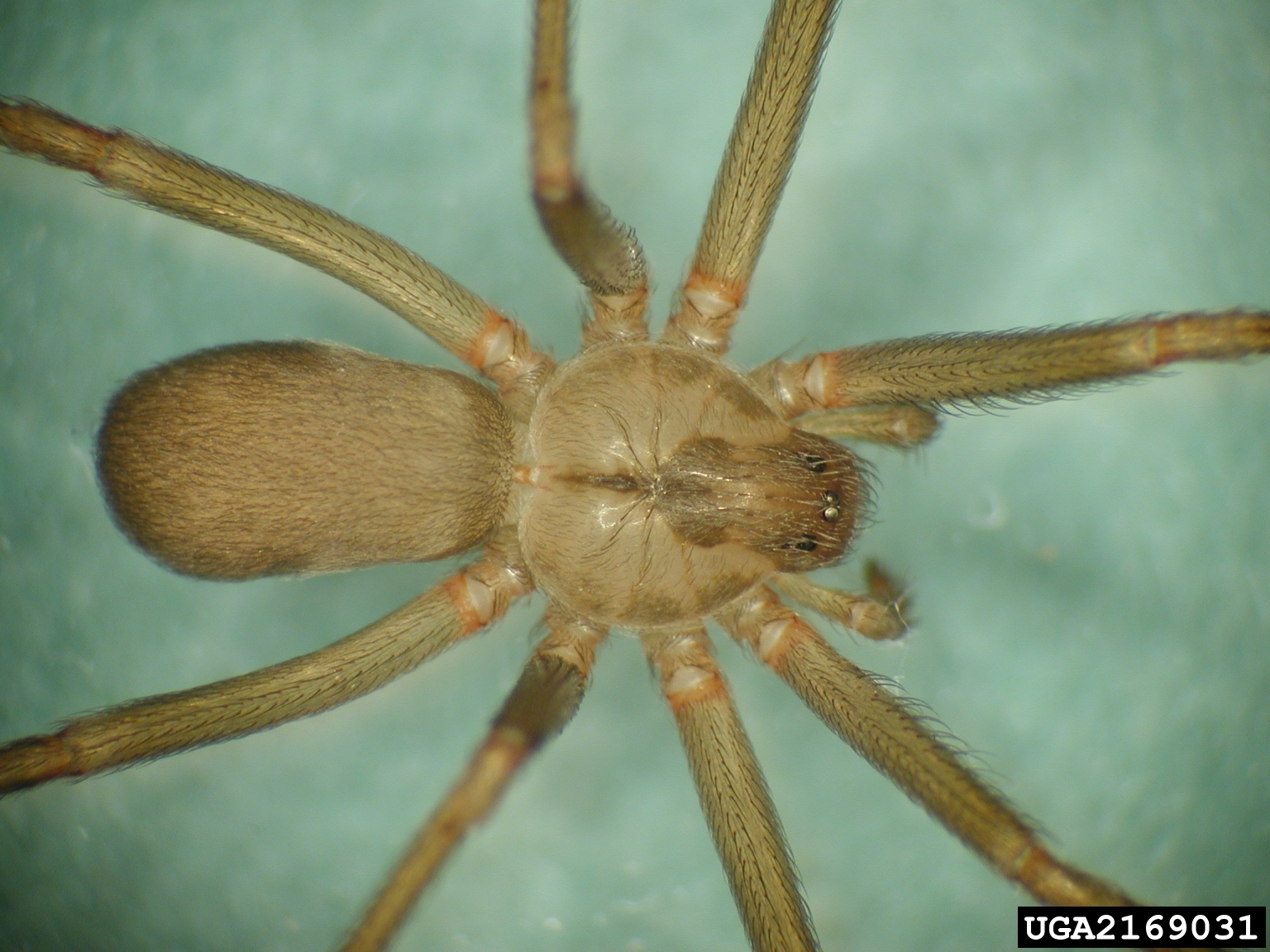
The brown recluse spider, Loxosceles reclusa, (Sicariidae). Photo courtesy of Lisa Ames, University of Georgia, Bugwood.org
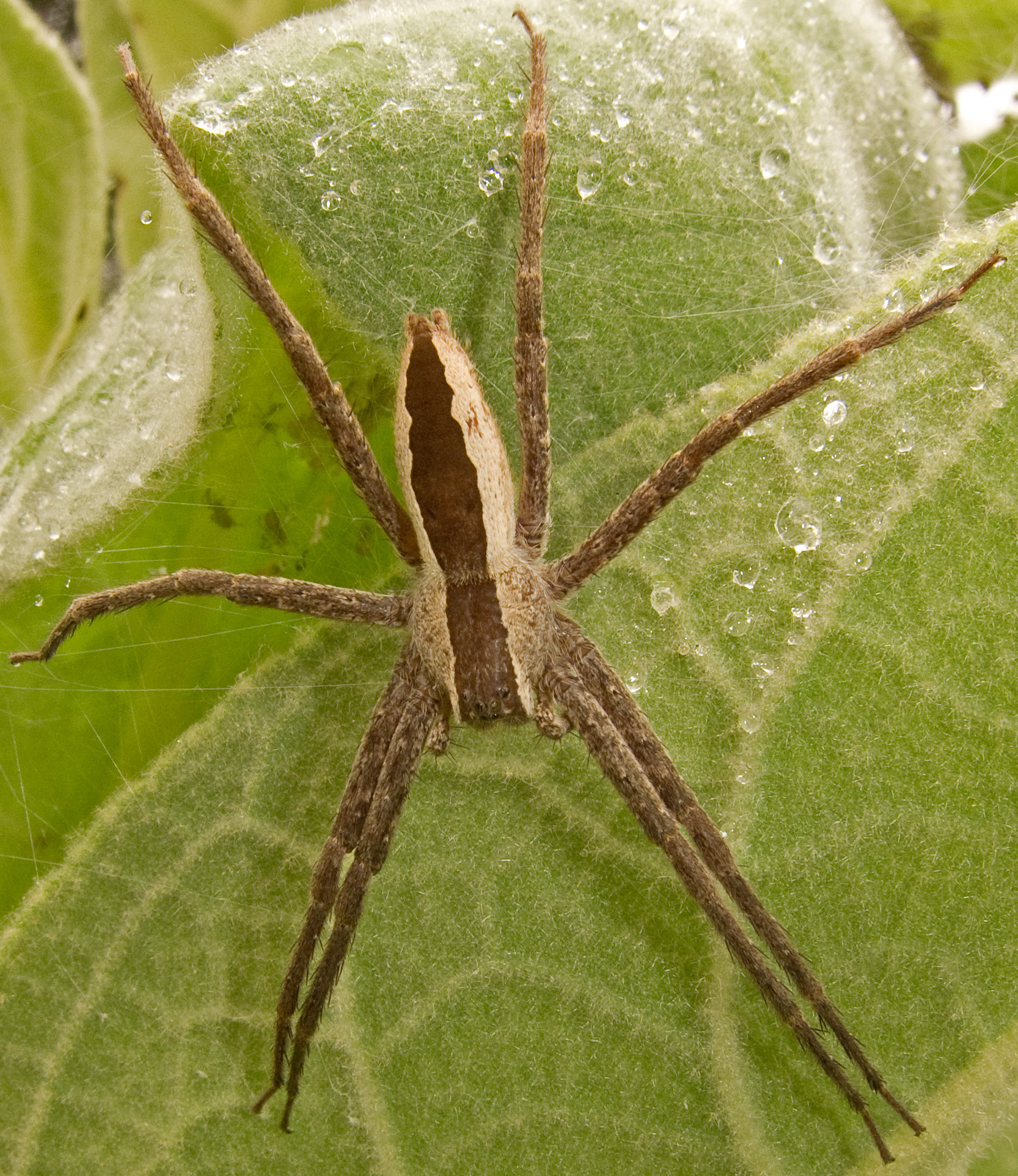
Nursery web spider, Pisaurina mira (Pisauridae). Photo courtesy of Seth Ausubel, Washington Crossing, Bucks County, Pennsylvania
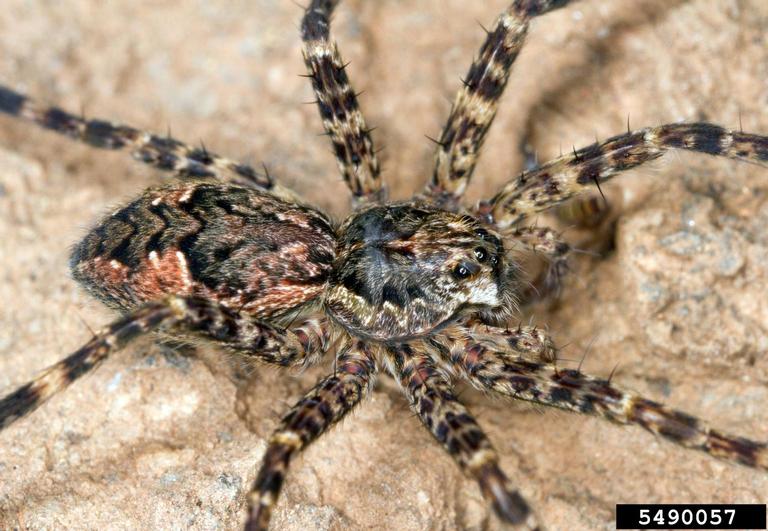
The dark fishing spider, Dolomedes tenebrosus (Pisauridae). Photo courtesy of David Cappaert, Bugwood.org
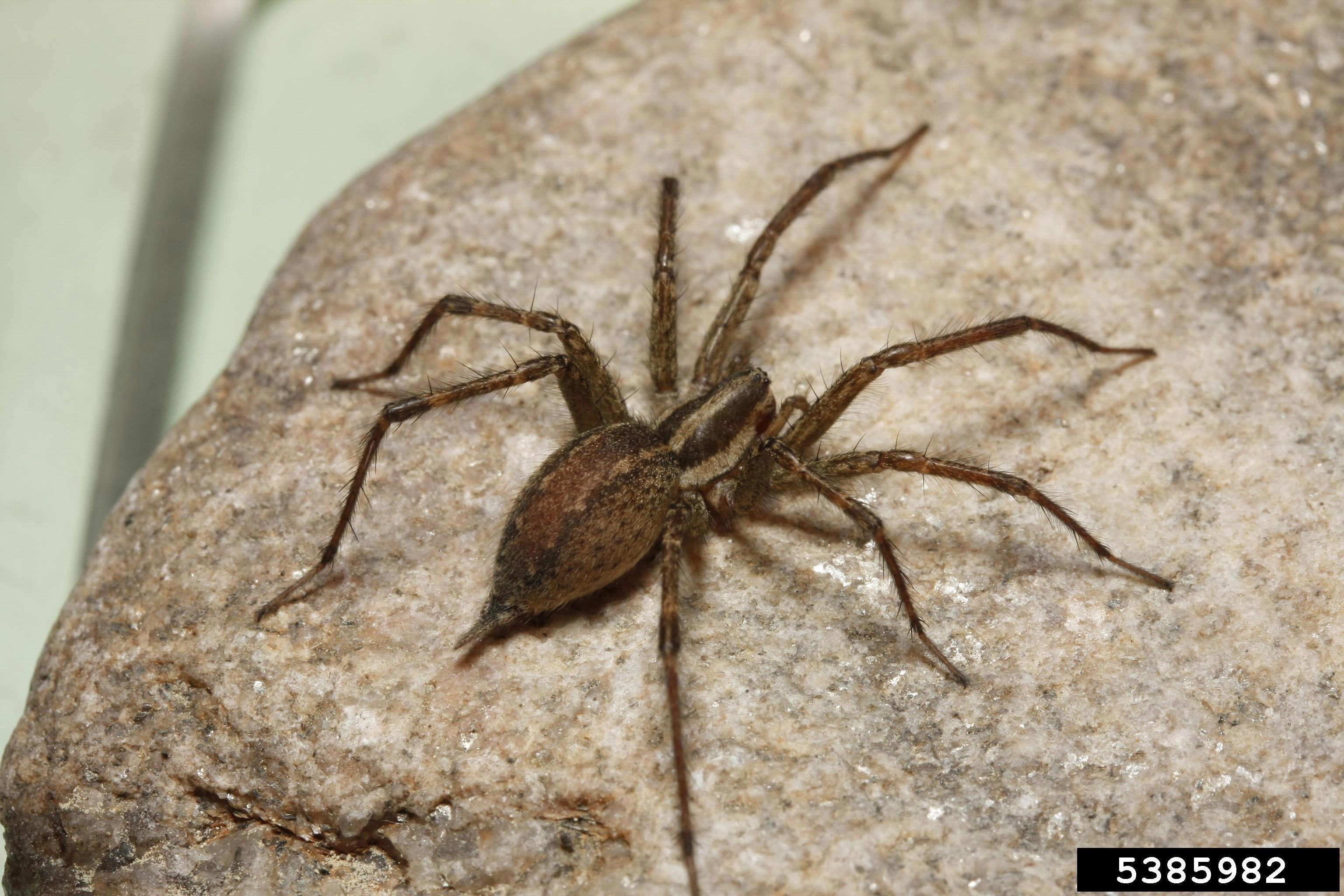
The grass spider, Agelenopsis pennsylvanica, (Agelenidae). Photo courtesy of Joseph Berger, Bugwood.org
The big ol’ wolf spider, Tigrosa helluo (Lycosidae). Photo courtesy of Jeff Brown Huber Heights, Ohio.
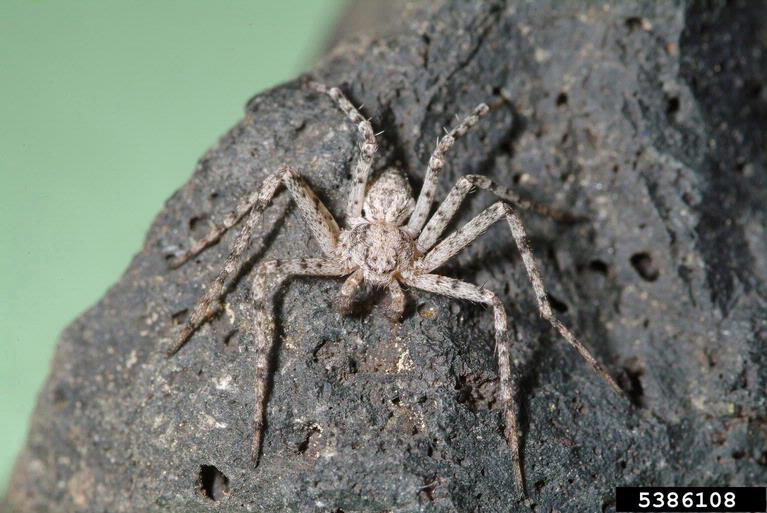
The running crab spider, Philodromus spp. (Philodromidae). Photo courtesy of Joseph Berger, Bugwood.org
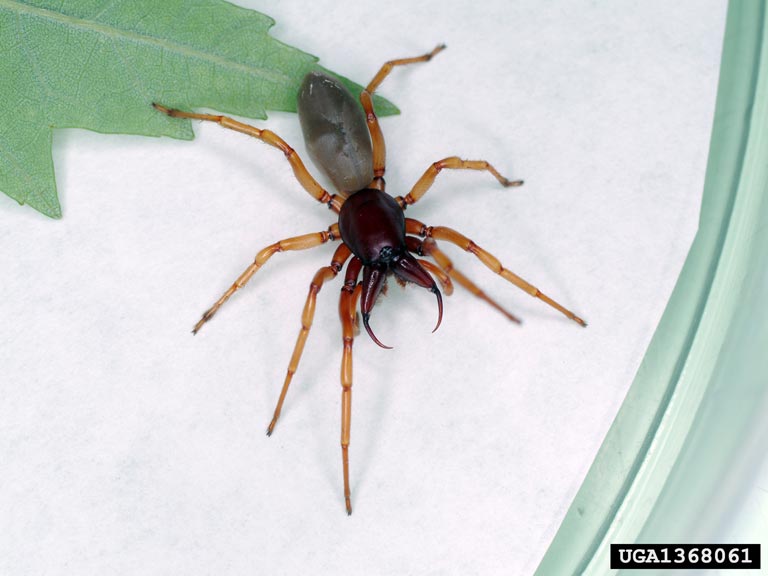
The cell spider aka woodlouse hunter, Dysdera crocata (Dysderidae). Photo courtesy of Joseph Berger, Bugwood.org.
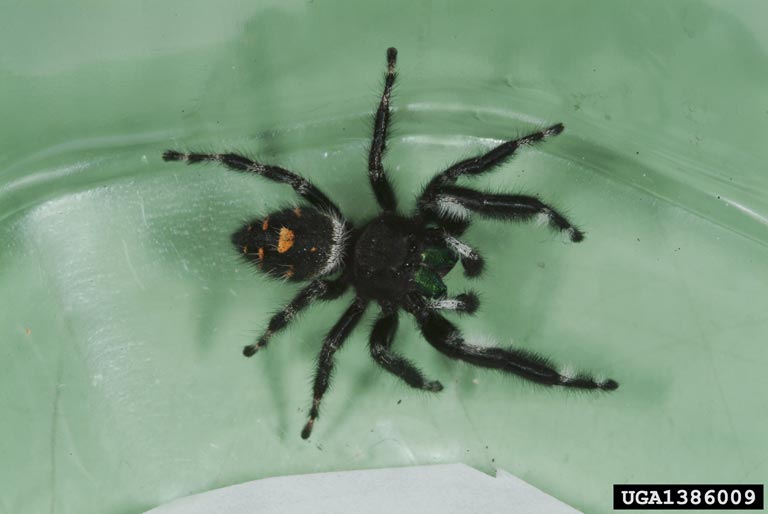
The bold jumper, Phidippus audax (Salticidae). Photo courtesy of Joseph Berger, Bugwood.org.
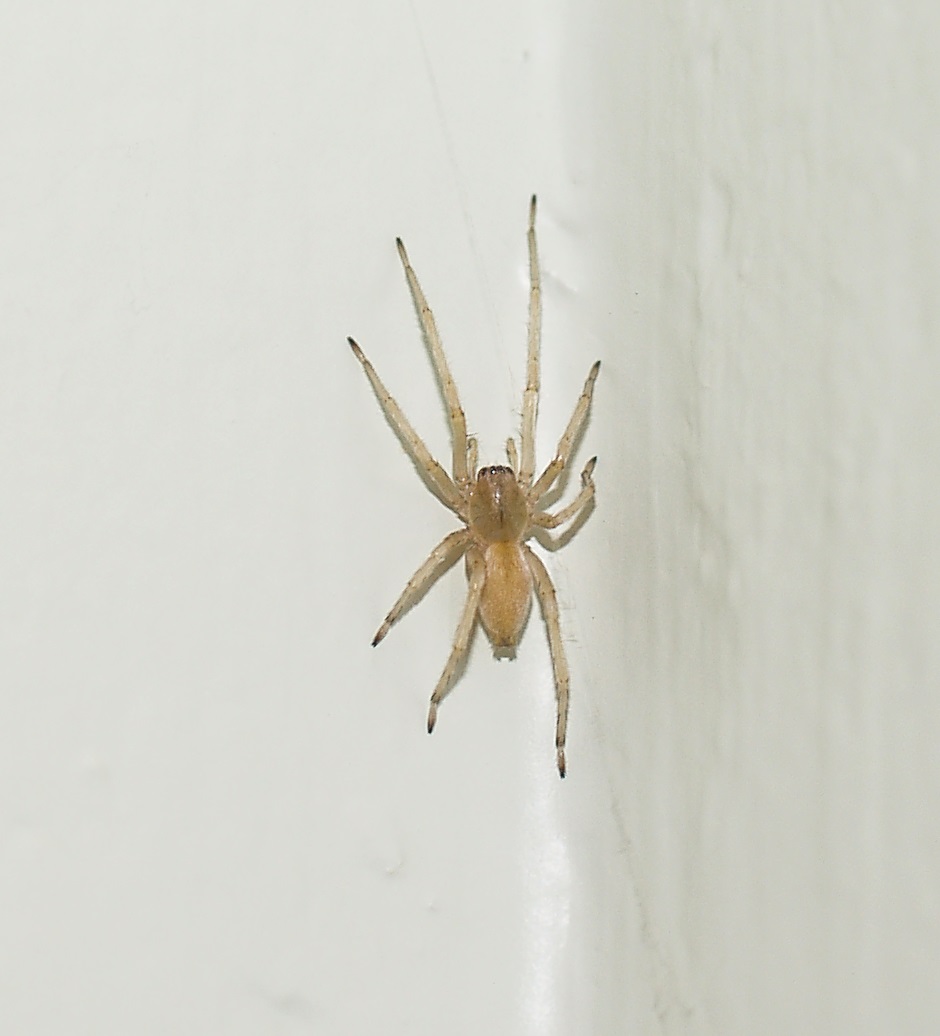
The yellow sac spider, Cheiracanthium spp. Eutichridae (formerly placed in Miturgidae and before that in Clubionidae). Photo courtesy of George Hart, Philidelphia PA
Cross spider, Araneus diadematus (Aranaeidae) Photo courtesy of Karen Snover-Clift, Cornell University, Bugwood.org.
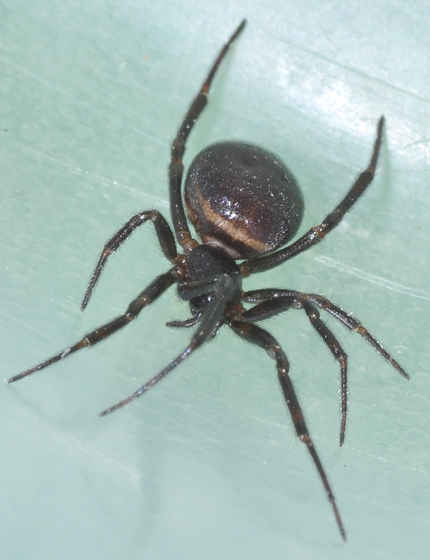
The northern cobweb spider, also known as false widow, Steatoda borealis (Theridiidae). The Northern Cobweb Weaver is another common Michigan spider that can cause recluse-like bites. Photo courtesy of Stan Gilliam, Guilford County, North Carolina.
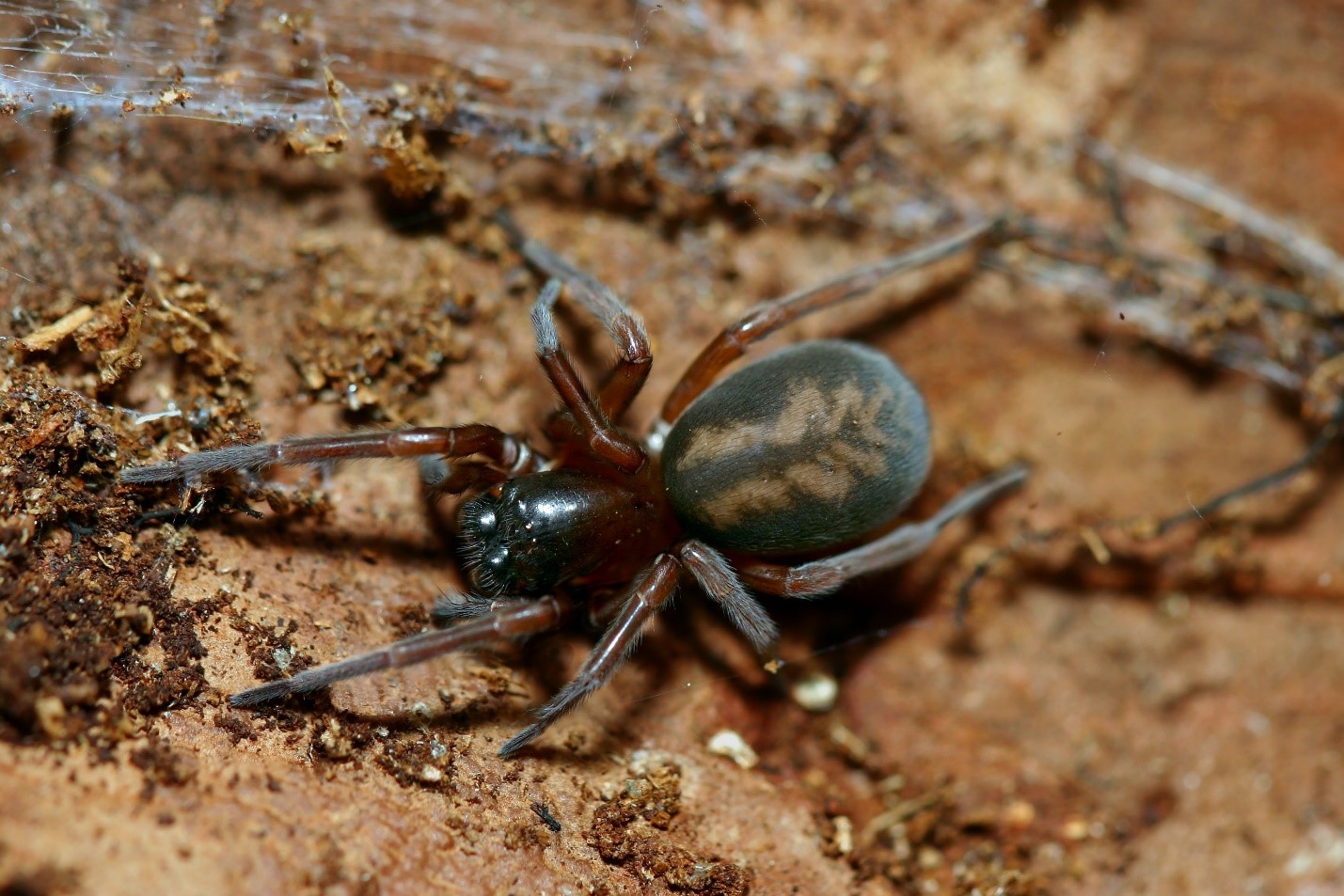
Hacklemesh spider, Callobius spp. (Amaurobiidae) courtesy of Tony DiTerlizz, used with permission. Copyright 2005 Tony DiTerlizzi.
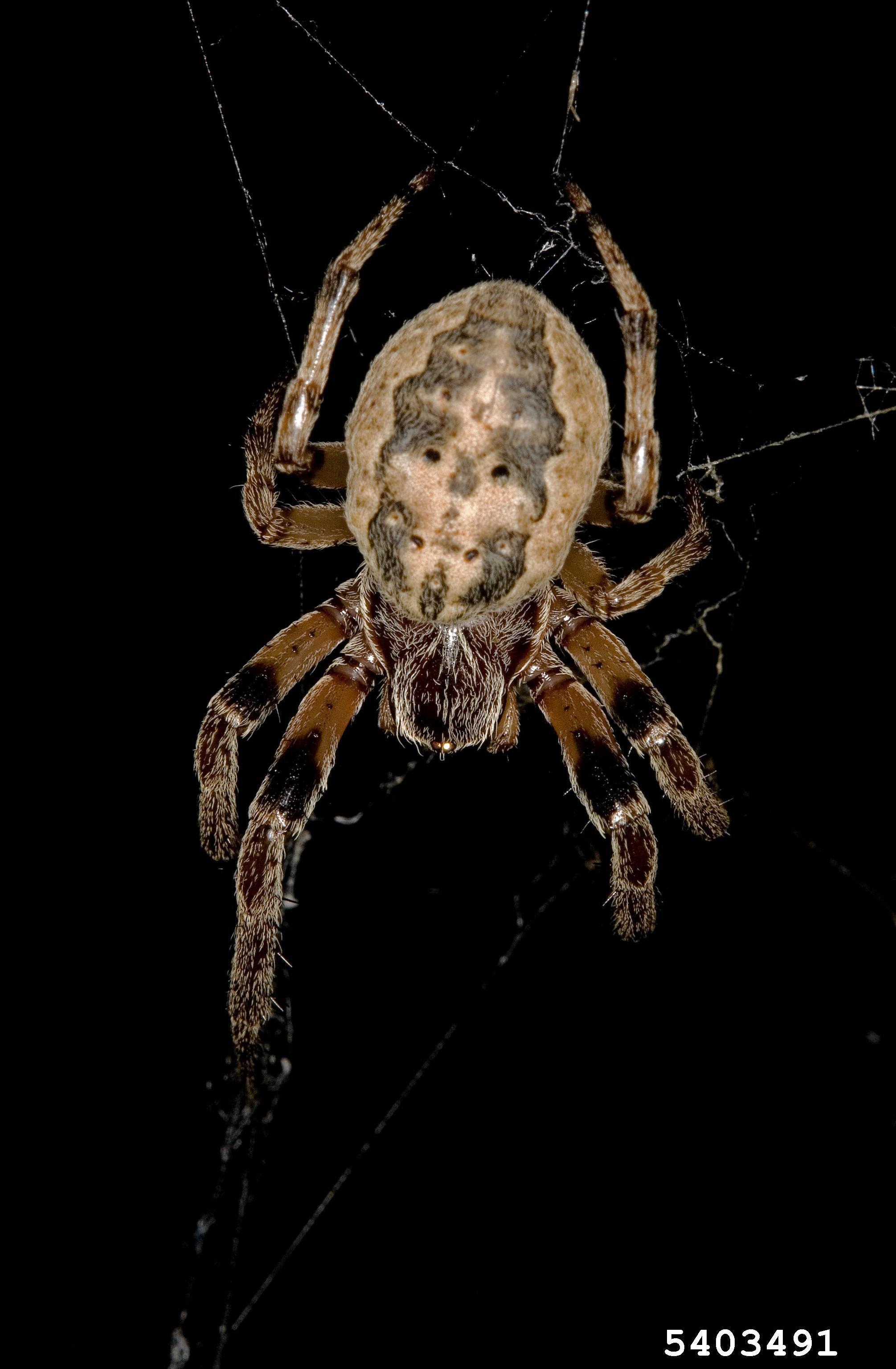
The Furrow spider, Lariniodes sp. (Aranaeidae). Photo courtesy of Dave Cappaert bugwood.org.
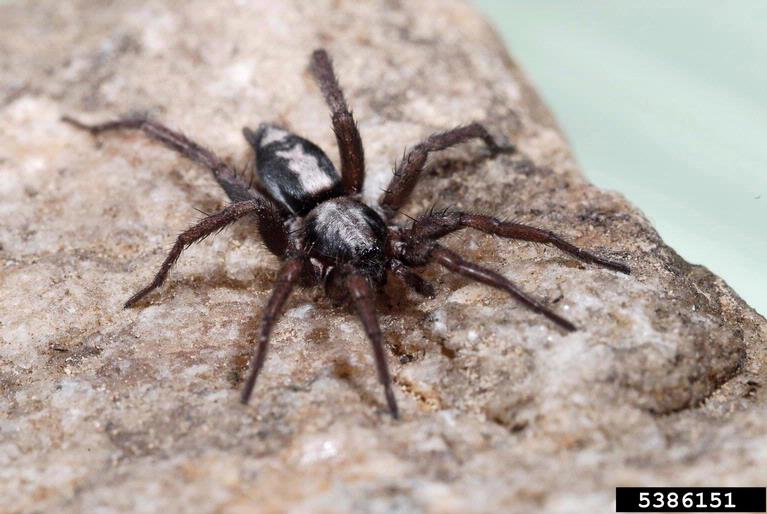
The Parson spider, Herpyllus ecclesiasticus (Gnaphosidae). Photo courtesy of Joseph Berger, Bugwood.org.
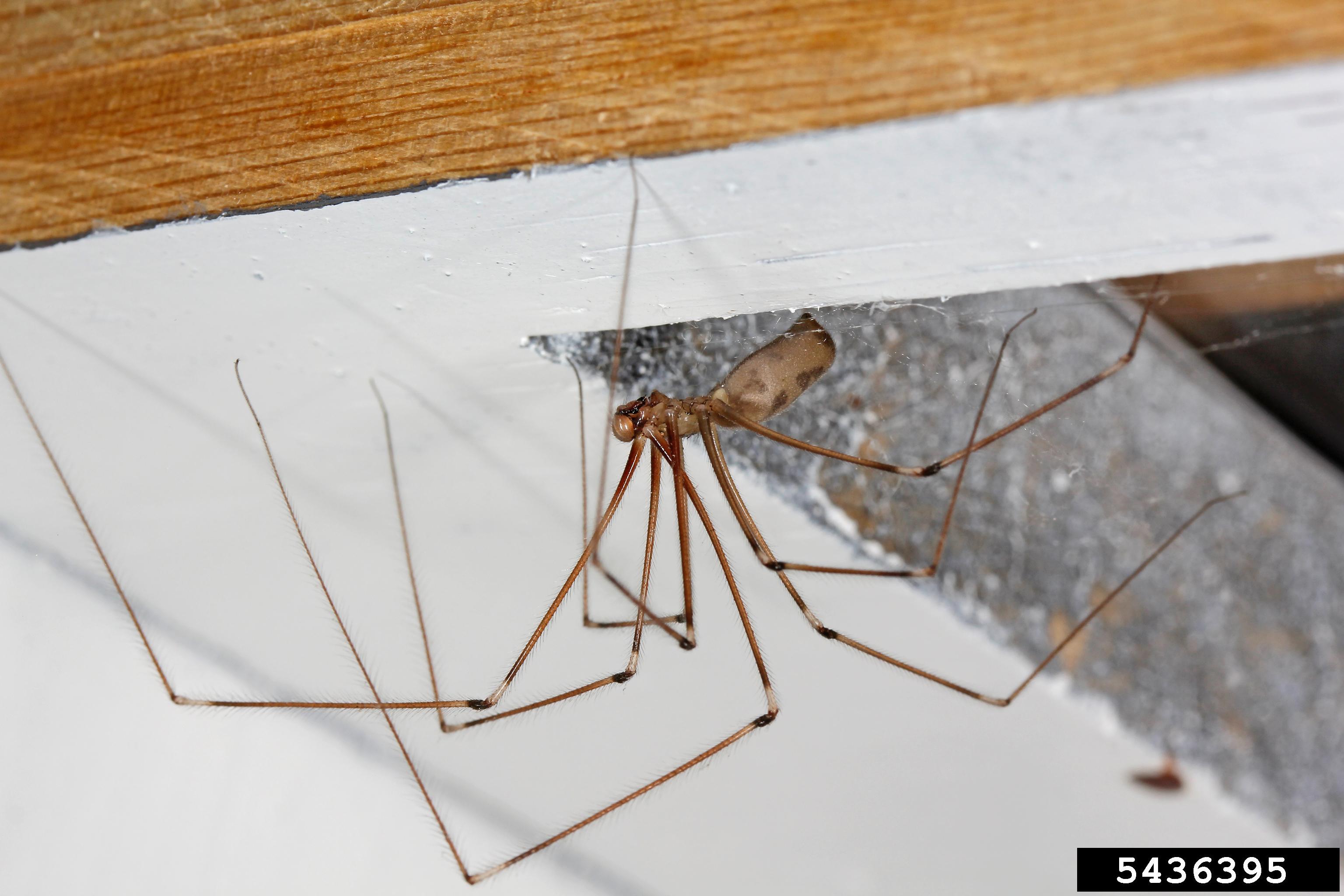
The long-bellied spider, Pholcus phalangiodes (Pholcidae). Photo courtesy of Joseph Berger, Bugwood.org
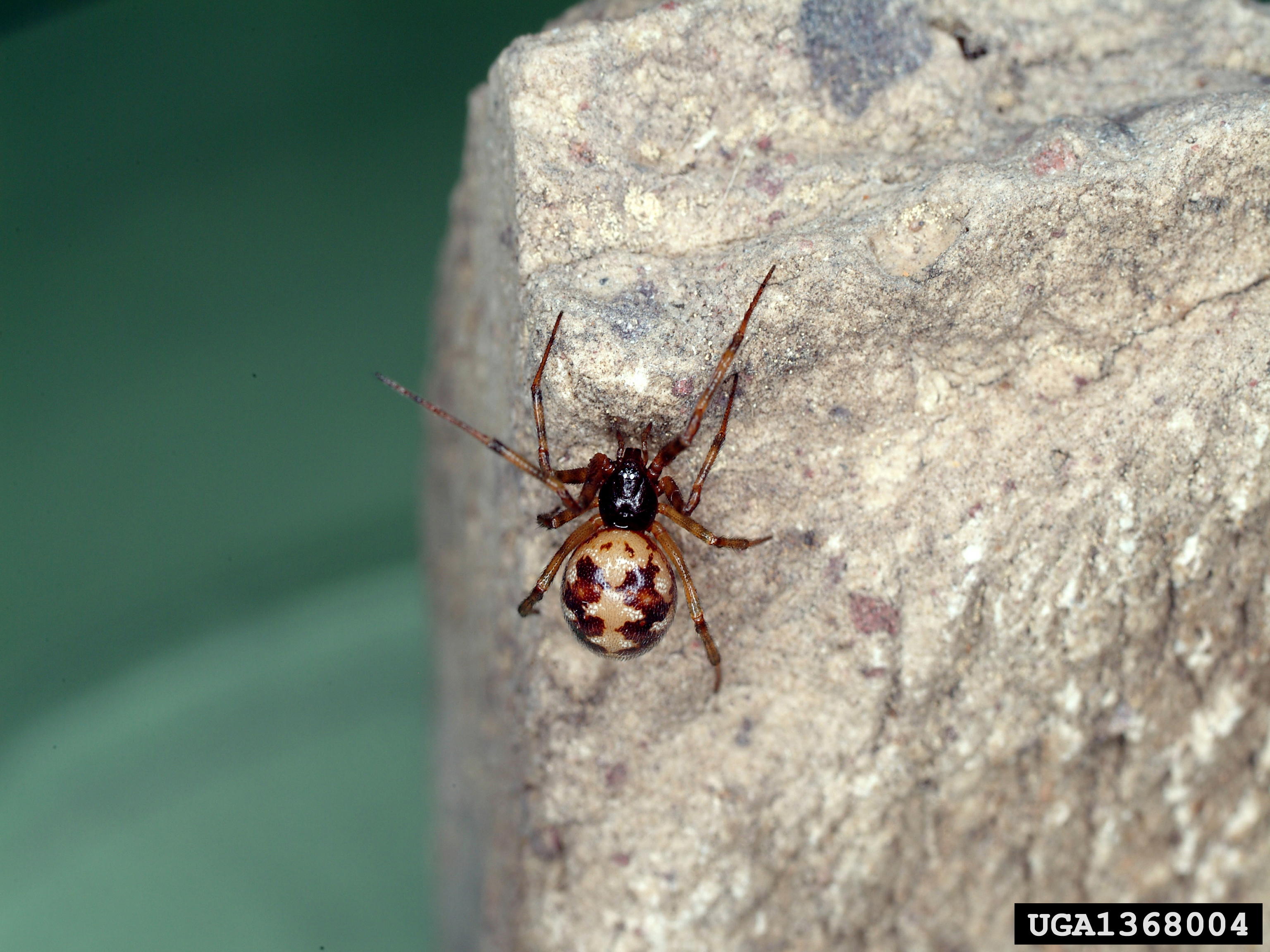
The Triangulate cobweb spider, Steatoda triangulosa (Theridiidae). Photo courtesy of Joseph Berger, Bugwood.org



 Print
Print Email
Email